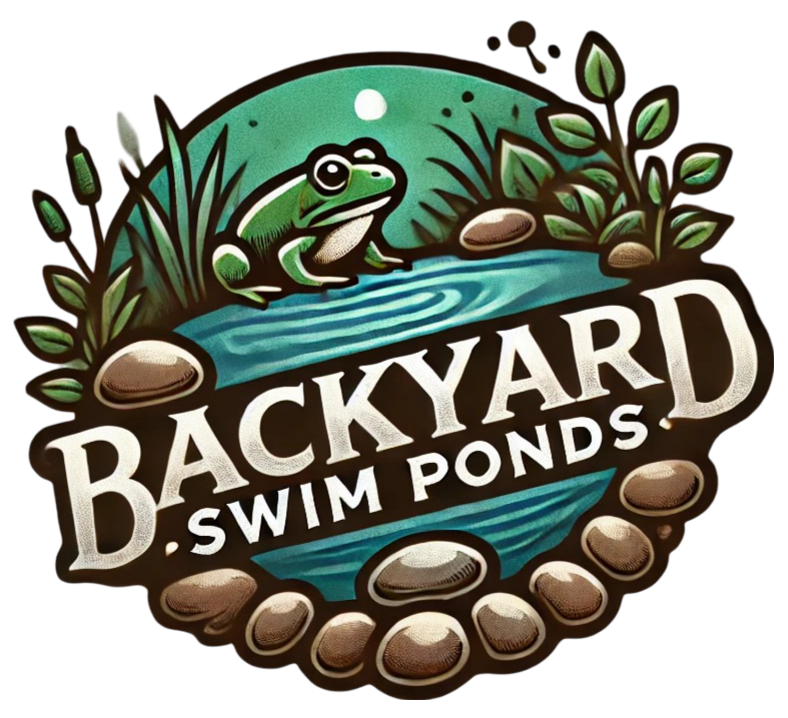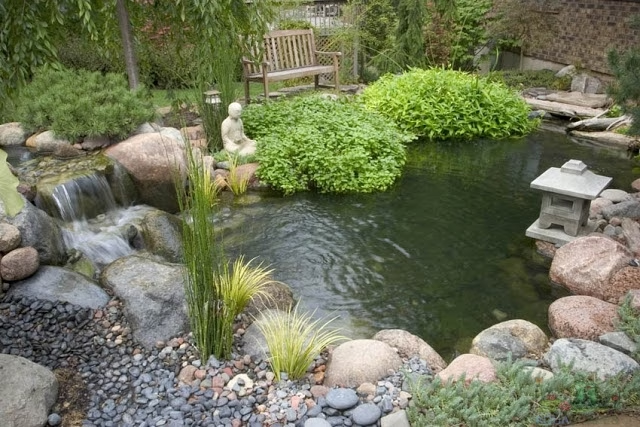Are you looking to create a serene retreat in your backyard, even if space is limited? Swim ponds, which are natural swimming pools that harmonize with your outdoor environment, may be the perfect solution for you. Typically ranging in size from 4×6 to 20×30 feet, these ponds can be thoughtfully designed to fit snugly within your property, providing both utility and beauty.
Swim ponds offer numerous benefits. They enhance the aesthetic appeal of your garden, are often more eco-friendly than traditional pools, and can require less maintenance over time. The sensory experience of a swim pond, from the sound of water to the presence of plants and wildlife, adds a unique dimension to your outdoor experience.
In this guide, we’ll explore how you can bring the beauty of swim ponds into your urban landscape, providing practical insights on design, maintenance, regulations, and ecological benefits. Whether you are a homeowner in the city looking to instill tranquility in your garden or a garden enthusiast eager to try something new, this resource is tailored to help you create your own pocket paradise.
Design Tricks to Maximize Your Available Space
Creating an effective swim pond in a compact area requires thoughtful design strategies that balance functionality with aesthetics. Here are some tips to consider:
-
Incorporate Vertical Elements: Adding features like small waterfalls or fountains can increase visual interest without overwhelming the available horizontal space. This approach enhances depth perception, making your area feel larger.
-
Utilize Dual-Purpose Zones: Consider designing areas around the pond that serve multiple functions. For example, a shallow ledge can function as both a planting space for water-loving plants and a lounge area for relaxing by the water.
-
Strategic Plant Placement: Choose aquatic plants that either float on the surface or grow vertically. This not only contributes to effective natural filtration but also maintains enough swimming space.
-
Install Compact Filtration Systems: Employing systems like subsurface gravel beds minimizes space while efficiently purifying the water.
-
Design with Curves: Opting for gentle curves rather than straight lines can create a more natural appearance and enhance the illusion of space.
By implementing these design techniques, you can optimize both the beauty and functionality of your swim pond, even in a small backyard.
Description: A well-designed compact swim pond that fits comfortably in a smaller backyard setting. (Source: Aquascape)

Description: A cross-section diagram of swimming pond technology that illustrates dual-purpose features for maximizing space. (Source: Biotop)
Choosing the Perfect Layout for Your Garden Oasis
The layout you choose for your swim pond is crucial to its functionality and the overall cohesion with your garden. Here are some key considerations:
-
Pond Shape and Location: Assess where to place your pond by considering sunlight, the landscape’s contours, and its proximity to your home. A well-placed pond becomes a focal point of enjoyment.
-
Integrated Seating Areas: Building seating into the edges of the pond allows for relaxation without the need for additional hardscaping, which can consume valuable space.
-
Tiered Designs: If your pond is larger, consider a tiered layout with varying depths. This can create distinct areas ideal for both swimming and lounging.
-
Aesthetic Features: Enhance the pond’s appeal with thoughtful landscaping, incorporating rocks and plants that not only beautify but also foster natural wildlife habitats.
Designing with these aspects in mind will help you create a swim pond that complements your garden while serving your leisure needs.
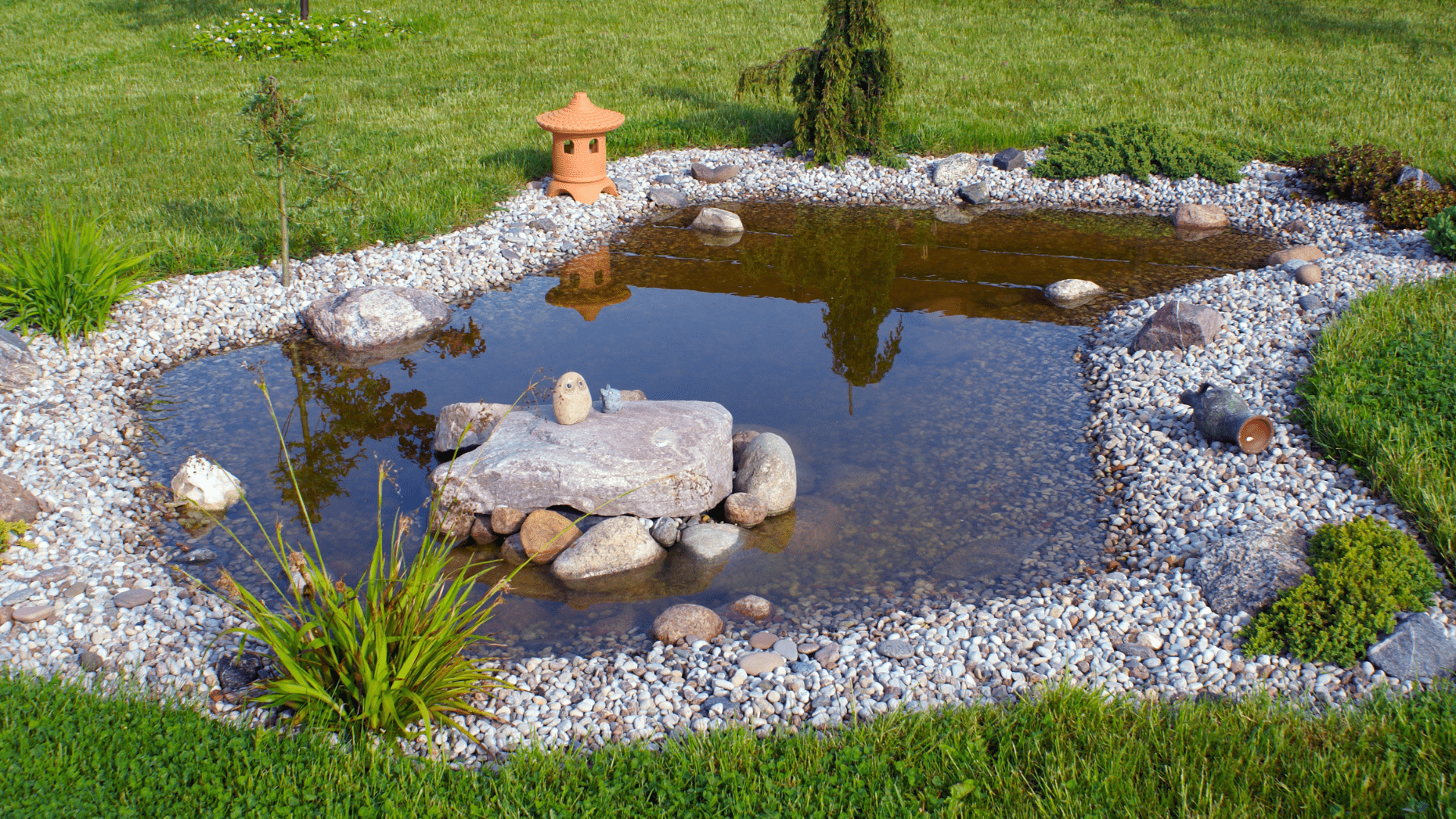
Description: Visuals of different pond layouts in conjunction with traditional garden features to show harmony. (Source: Gardening Express)
Are Small Swim Ponds Eco-Friendly? Absolutely!
Yes, small swim ponds can be a valuable addition to your garden while being environmentally friendly. They bring several ecological benefits that you might find appealing:
-
Natural Filtration Systems: Swim ponds employ methods that effectively filter pollutants through beneficial bacteria and aquatic plants. This process improves water quality naturally, reducing your reliance on chemicals.
-
Native Aquatic Plants: Using plants that thrive in your local environment can bolster your pond’s ecosystem, as these species typically require less maintenance and enhance biodiversity.
-
Encouraging Wildlife: Swim ponds often attract beneficial wildlife, contributing to a thriving environment. Birds, insects, and other creatures introduce natural pest control and aid in pollination.
By embracing these eco-friendly features in your swim pond, you help sustain local wildlife while enjoying a cleaner ecosystem.

Description: An infographic highlighting the ecological benefits of swim ponds compared to traditional swimming pools. (Source: Pond and Garden Design)
Effortless Maintenance for Your Compact Paradise
Keeping your swim pond healthy doesn’t have to be a labor-intensive endeavor. Here are some practical tips for maintenance:
-
Regular Skimming and Debris Removal: Use a mechanical skimmer to clear away leaves and debris from the water’s surface. Aim to do this weekly to maintain water clarity.
-
Annual Spring Cleaning: Conduct a thorough cleaning each spring. This includes removing debris from the pond’s bottom and checking on the health of your plants.
-
Plant Management: Maintain aquatic plants by trimming dead foliage and monitoring growth. Keeping your plants healthy contributes to overall pond balance.
-
Water Quality Monitoring: Regularly test for harmful substances and monitor pH levels to ensure your pond’s ecosystem thrives.
By adhering to these maintenance practices, you can enjoy a stunning swim pond with minimal effort on your part.
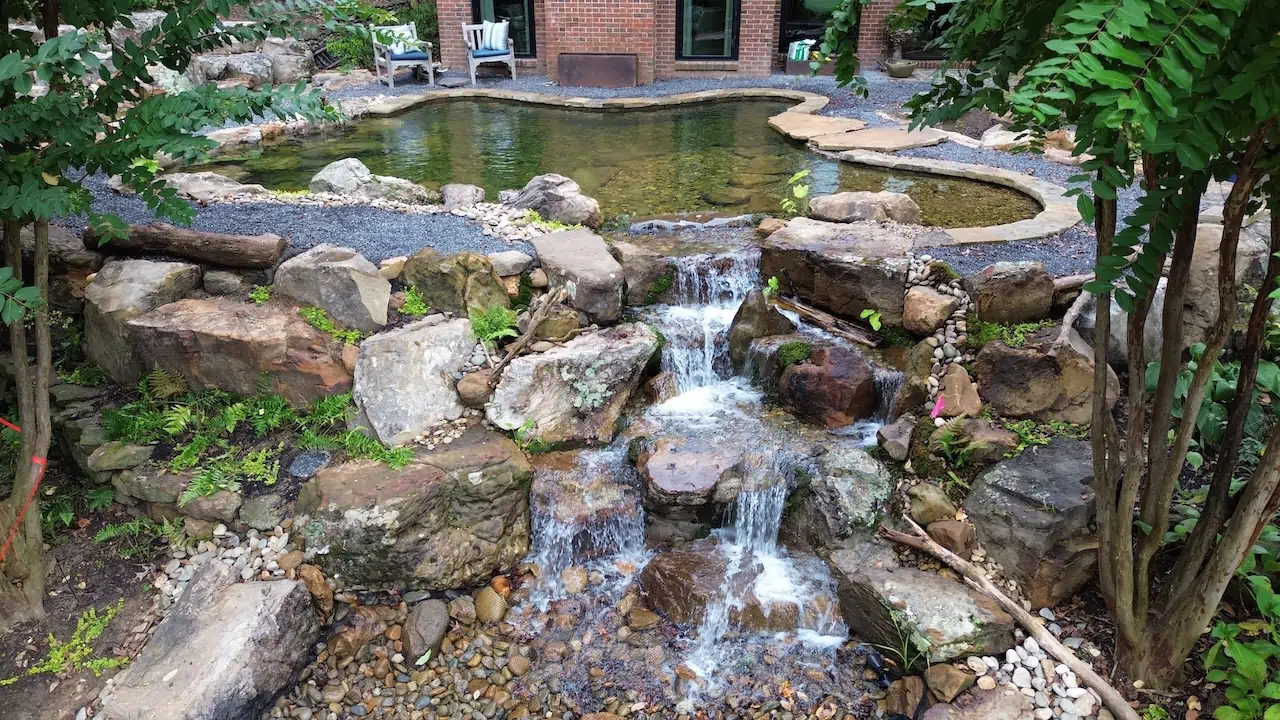
Description: Step-by-step visual content of pond maintenance tasks, focusing on skimming and debris removal. (Source: Memphis Water Gardens)
Navigating Regulations and Permits with Ease
Installing a swim pond may involve navigating legal requirements and obtaining necessary permits. Here are some points to guide you through the process:
-
Permit Requirements: Generally, installing a natural swim pond will require similar permits to those needed for traditional swimming pools, including building permits and possibly plumbing permits.
-
Zoning Considerations: Local zoning laws dictate how close a pond can be to property lines and may restrict water feature sizes. Check these regulations before starting your project.
-
Safety Regulations: Depending on local laws, you might need to install safety fencing around the pond, especially if children or pets will be nearby.
-
Health Department Approvals: Ensure your pond complies with health regulations that might be applicable. Public or larger private swim ponds, in particular, face stringent requirements.
By understanding and adhering to these regulations, you can smooth the pathway to enjoying your swim pond.
Description: Flowchart illustrating the permitting process for swimming pools, applicable to natural swimming ponds as well. (Source: City of Boynton Beach)
Innovative Filtration Solutions for Small Spaces
Maintaining clean water in your swim pond can be made easier with innovative filtration solutions. Here are some systems to consider:
-
Bio Compact Filters: These filters are tailored for small ponds, often installed beneath the surface to conserve space while providing effective water purification.
-
Vertical Filtration Systems: This design integrates filtration components into the pond’s structure, conserving space and enhancing its natural appearance.
-
Smart Technology: Recently developed smart filtration systems can automatically adjust to varying conditions, ensuring optimal water quality.
With effective filtration solutions, you can keep your swim pond clear and healthy without requiring extensive space for bulky equipment.

Description: Visual comparison demonstrating the effectiveness of new filtration solutions for ponds. (Source: Everything Ponds)
Embrace Your Urban Escape: A Recap of Pocket Paradise Design
In conclusion, swim ponds offer an excellent opportunity for creating a beautiful and functional addition to your backyard.
-
Feasibility: These ponds can be designed to fit seamlessly in smaller spaces and still provide enjoyment.
-
Creative Design: By applying the strategies discussed, you can establish a swim pond that fulfills your needs while enhancing your garden’s aesthetic.
-
Long-Term Benefits: Swim ponds typically incur lower maintenance costs when compared to traditional pools, making them a savvy investment.
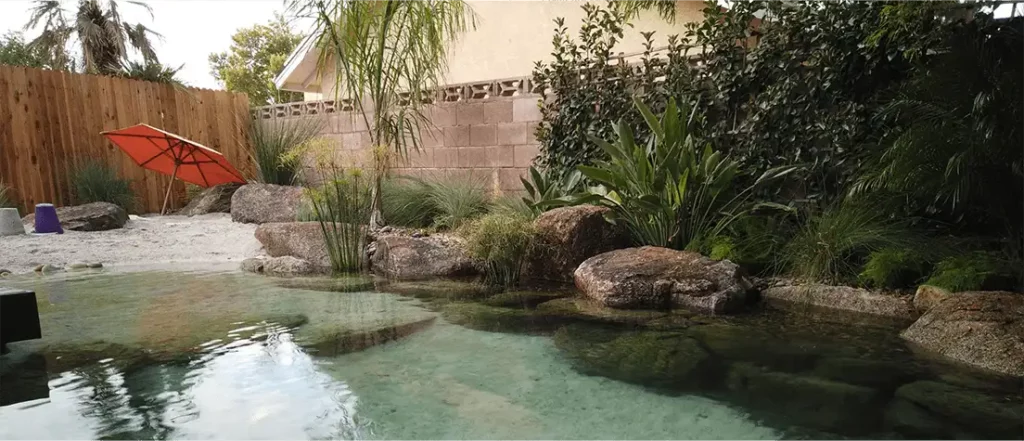
Description: An inspiring image of a tranquil swim pond set in a lush backyard oasis. (Source: Reflections Water Gardens)
By following this guide, you’re well on your way to creating a pocket paradise in your own outdoor space. With careful planning and design, your swim pond can become a cherished aspect of your home, providing relaxation and joy for years to come.
